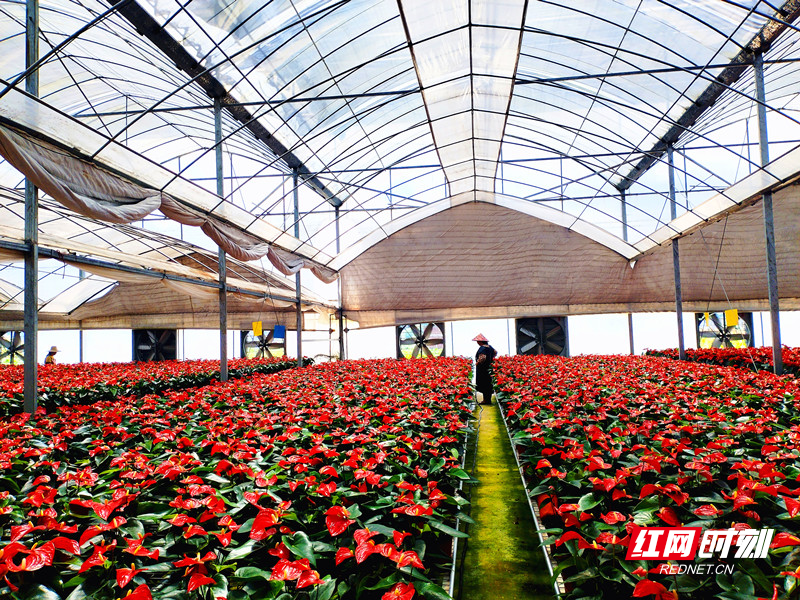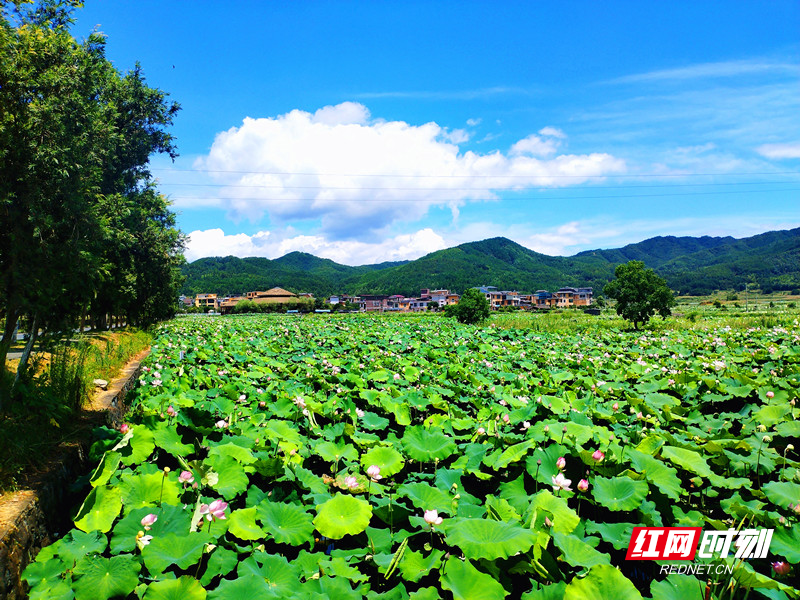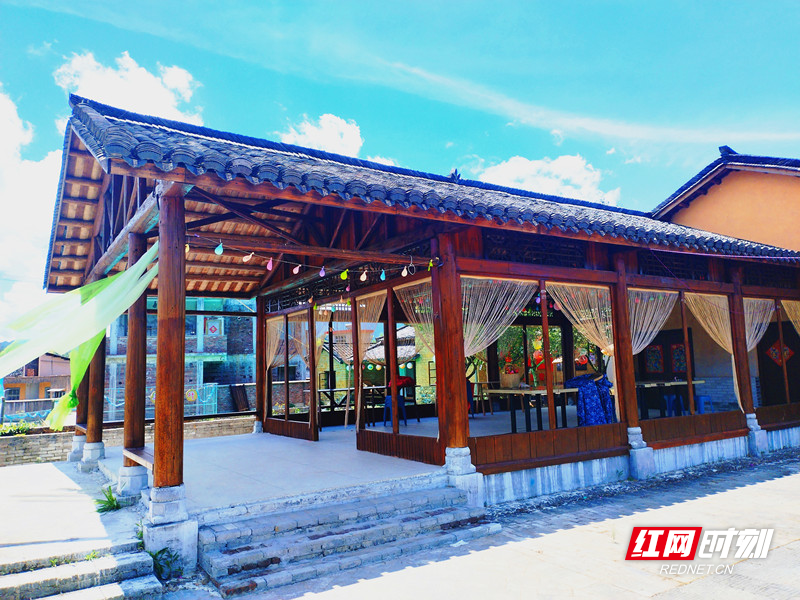Ancient village sees ‘flower economy’ boom
2024-08-04
In hot summer, various kinds of flowers like flamingo lily, lotus and sunflower are blooming in Jinshan Village, Tuqiao Town, Rucheng County.
Ye Helong, secretary of Jinshan Village, said that as a national 3A scenic spot and a provincial historical and cultural village, it has worked to develop industries through the combination of ancient and modern elements.
Flamingo flower
In the flower base on the edge of Jinshan Village, rows of flamingo flowers are growing well on the modern intelligent flower beds arranged in an orderly manner. And villagers are busy with drip irrigation.

“It’s crucial to control the temperature, humidity and light when planting flamingo lily. Water and fertilizer drip irrigation should be done every three to five days, and it should not be sprayed on branches and leaves, otherwise the flowers are easy to get burned under high temperature.” He Sulan, a staff of the base introduced that the base has 8 greenhouses covering about 40,000 square meters with over ten popular varieties introduced from Mexico.
Flamingo lily is native to tropical rainforest areas such as Mexico and Costa Rica. It symbolizes grand plans and successful dreams, with a long flowering period and high ornamental value. It can be used as high-end cut flowers and potted flowers, and has high economic value.
Flamingo flowers prefer warm, humid and semi shade environment, but they are shade-intolerant. Though they love sunlight but need to avoid direct sunlight. therefore, the flowers are only planted in a few southern provinces after being introduced to China.
In 2014, Jinshan Village introduced flower businesses from Guangdong relying on its warm winters and cool summers, large temperature differences between day and night, loose and fertile soil, to build a flamingo planting professional base, and a sales office was set up in Guangzhou, Guangdong province.
By adopting scientific methods such as summer night delivery and winter day delivery, the flowers sell well in the Guangdong-Hong Kong-Macao Greater Bay Area.
He Sulan, who has been working at the base, said that the base produces more than 60 tons of flowers annually, with an annual output value of between 8 million and 10 million yuan. In addition to hiring more than 30 villagers for fine management and maintenance, it also hires more villagers to work temporarily during busy seasons, with an annual income of over 1 million yuan.
Lotus flowers
The blooming lotus flowers in Jinshan Village attract an endless stream of tourists.

Ye Helong introduced that the lotus base covers over 820 mu (about 54.67 hectares) with the white lotus planted. Not only does it bring in a land transfer income of 300 yuan per mu (about 0.067 hectares), but it also brings villagers income from working in spring plowing, sowing, field management, lotus root harvesting, and product processing.
The land in front of Jinshan Village is a cold water field, which is not suitable for rice cultivation. In order to coordinate the protection of arable land and the development of rural tourism, the village government encouraged villagers to plant lotus many years ago, which brought the village certain popularity, but it didn’t form large-scale industrial benefits. Afterwards, the land was once planted with various types of crops by villagers.
Last year, lotus growers were introduced from Xiangtan, the main production area of Xianglian lotus in the province to develop white lotus variety and build 2 professional processing factories, and a complete industrial chain came into being.
Leading products like lotus seeds and lotus root starch are sold well both inside and outside the province, and over 400 villagers work nearby.
In addition, Jinshan Village has fully tapped into the potential of the roadside paddy fields and planted over 150 mu (10 hectares) of sunflowers, enhancing the popularity of rural tourism.
“The sunflower symbolizes winning the championship in one fell swoop. As they were right in bloom before the three important exams, thousands of candidates and parents were drawn here every day.” At present, the sunflower seeds are ripe.
Ancient houses revitalized
“Once the ancient dwellings are revitalized, they show their great appeal, with promising prospects for integrated development of agriculture, culture and tourism.”

By the green rice fields, the quaint and elegant Jinshan rural campsite is adorned with red lanterns, and the owner He Yingying is busy tidying up tables, chairs, and decorations, waiting for the next wave of guests to arrive.
Jinshan Ancient Village has been built for more than 820 years, with six ancient ancestral temples and 95 well-preserved ancient folk houses in the Ming and Qing dynasties. The ancient buildings blend together with modern views like lotus pond, flowers, squares.
Since last year, He Yingying has transferred some ancient and idle houses to create a rural campsite that integrates homestay inn, team building and camping. It can meet the needs of team building gatherings, cultural exchanges, farming experience, rural hiking and more.
This place not only offers experiential projects such as flower viewing, cooking, barbecuing, but also holds cultural and sports activities such as artistic performances, handicraft exhibitions and exchanges, greatly enhancing the popularity.
Jinshan Village has actively implemented the action of “Awakening Old Houses”, with more than 20 ancient houses renovated, and more than 30 cultural and tourism shops opened.
At the same time, it has cooperated with companies to run about 10 leisure farms. This drives the development of multiple business formats such as quaint tea houses, special cuisine, family study tour and outdoor expansion throughout the village.
In addition, the village has also planted more than 400 mu (26.67 hectares) of rice, and developed 100-mu industrial bases for ginger, watermelon, corn. The beautiful ecology, thriving industry and rich villagers make the ancient village full of vitality.




